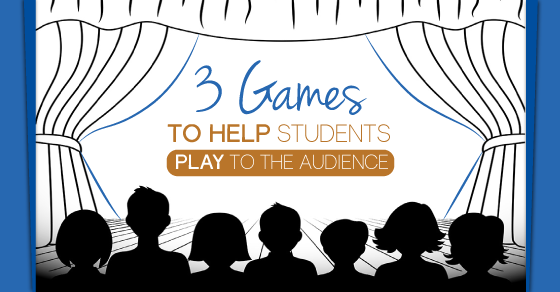Do You Know Your Character?
Characters come to life in the small details, the little things like personal preference, food, or music choices. These two exercises can help student actors discover those details and really get to know their characters.
You can download a PDF of both exercises at the end of this post!
Day In The Life
There is no better way to identify the small details for a character than to portray a day in their life. Use this exercise during rehearsal, or if you have students working on a scenes in class, use it as a warm up exercise.
Run through this exercise first by having students think about their own day.
Start students lying on the floor and ask them to visualize “a day in their life.” What do they do first thing in the morning? How do they interact with their family? Once you verbally walk through the exercise, tell students “go!” and have them physicalize a day in their lives:
When I say “go” you’re going to start this exercise. On your own time and in your own space, go through a day in your life. You’re going to mime each individual step. Don’t look at other people or watch what others are doing. Just focus on your “day in the life.”
Note – the PDF includes a sample script for this exercise.
During the exercise, side coach students to take each individual step slowly, especially if they seem to be jumping ahead (i.e. miming breakfast and then skipping to right to after school).
Encourage them to be specific with their actions. Remind them not to watch other people but to be in their own space and do their own actions.
At the end of their “day,” have students lie back down and close their eyes to signal that the day has ended.
After everyone has completed the exercise, discuss the experience. What was it like to think about their daily lives in detail instead of just living it? Did they like how they spent a typical day? Were they surprised by anything? What did they learn about themselves? Did they do anything unique that no one else did?
Character Day In The Life
Just as we come to life in the small details, so do our characters.
Have students do the same exercise, but instead of thinking about themselves they are going to become their character. How would their character wake up in the morning? What is their first action? Do they have a family to interact with? Do they skip breakfast? Do they listen to music when they go somewhere? Are they introverted or extroverted? Does a time period or historical era affect their actions? What would happen in their typical day?
Remind students that a typical day for their character probably won’t be one that happens in the play. Plays explore extraordinary days and events. Tell students to focus on a typical day for their character and to make choices which reflect that type of day.
Start the exercise the exact same way, with students lying on the floor. Spend a minute asking students to visual their character, to think about what they look like, how they sound, perhaps ask them their first line in the play. This will help ground students in their character before the exercise begins.
As they go through the exercise, side coach students to take their time instead of jumping ahead. You also want to make sure students think about their character physically. Encourage students to move and mime their actions as their character would.
After everyone has completed this exercise, discuss the experience. What was it like to do the exercise as someone else? What did their character do differently? Were they able to distinguish between their own day in the life and their character’s day in the life? Did they like how their character spent a typical day? Were they surprised by anything? What did they learn about their character? How was it to take on ordinary activities while physicalizing their character?
How do I use this exercise?
This exercise gives you a practical application of a character profile. The character profile exercise challenges students to come up with details for their character like favourite foods, pet peeves, and family descriptions. In this exercise, they have to apply many details of the character profile because a day in the life involves those elements: interacting with the family, deciding on breakfast, etc. The exercise also gives students the opportunity to physicalize their character without having to think about their lines.
The Bedroom
Start the exercise with a discussion about bedrooms. How do you keep your bedroom? Is it a specific colour? Is it a little messy or does it look like a tornado went through it? Is it a hideaway or an oasis? Is there something hidden in the closet? Under the bed? You can tell a lot about a person about how they live – how they keep their room or their things. Everyone has a public and a private persona; the bedroom is often the visualization of our private persona.
Describe your character’s bedroom. How would your character keep this most private space? How is it a visual representation of your character?
To make the exercise even more specific, use the five senses. What does this space smell like? Perfume or gym clothes? What does this place sound like? Can you hear the city just outside the window or an air conditioner that is always running? Does loud music play to drown out the fighting on the other side of the wall, or does soft calming music play to create an atmosphere? And when you get to taste, think outside the box. Dust has a taste. Perfume has a taste. Candy on the bedside table. Hidden pizza under the bed. There’s always something to include for taste.
How do I use this exercise?
If your students know their characters, they will be able to see them outside the world of the play. It will help students to see their character as three-dimensional and human. Ask students what personality traits come to light by the way they’ve described the bedroom. Do they come across as protective? As a show off? Are there any hidden talents? Any secrets? Then ask when and where they can portray these traits in the play.



